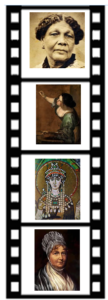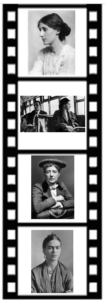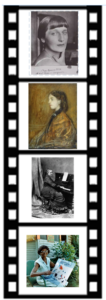 Top to bottom: Mary Seacole, Artemisia Gentilischi,
Top to bottom: Mary Seacole, Artemisia Gentilischi,
Theodora, Elizabeth Fry
Mary Seacole (1805-1881)
In her late forties, Mary travelled from her home in Jamaica to Britain to offer her services as a nurse during the Crimean War (1853-56). Despite being turned down, Seacole refused to give up: a woman of mixed-race with a Jamaican mother and Scottish father, she had dealt with prejudice and impediments her whole life. Funding her own passage to the Crimea, Mary established the British Hotel near Balaclava. 19th century soldiers had no welfare support and Seacole’s hotel provided a comfortable retreat away from battle with accommodation for convalescents and the sick.
Artemisia Gentilischi (1563-1653)
An accomplished painter in a period of Italy’s history when women weren’t always welcomed by patrons or fellow artists, Gentileschi generated both critical praise and international success. Her portraits of strong, suffering women represent, for some, the trials she faced in her personal and professional life.
Theodora (497-548)
Theodora exercised considerable influence as wife of the emperor Justinian I, handling political affairs and corresponding with foreign rulers. She is remembered as one of the first rulers to recognise the rights of women, altering divorce laws to give greater benefits to women and prohibiting the traffic in young girls.
Elizabeth Fry (1780-1845)
The so-called ‘Angel of Prisons’, Fry was an English Quaker who led the campaign in the Victorian period to make conditions for prisoners more humane. She also helped to improve the British hospital system and treatment of the insane.

Top to bottom: Virginia Woolf, Rosa Parks, Ethel Smyth, Frida Kahlo
Virginia Woolf (1882-1941)
Most famous for her works including Mrs Dalloway and A Room of One’s Own, the English author Virginia Woolf was also one of the founders of the influential literary set the Bloomsbury Group. Her complex personal life and sometimes controversial viewpoints have led her to become both an influential and divisive figure.
Rosa Parks (1913-2005)
In 1955, Rosa, an African-American living in Alabama, challenged the race segregation that existed in parts of the US by refusing to give up her seat on a bus so that a white person could sit down. Her protest was supported by many other African Americans and sparked the civil rights movement which, in the 1960s, eventually won equal rights.
Ethel Smyth (1858-1944)
An English author, composer and campaigner for women’s rights, Smyth composed the song that was to become the anthem of the suffrage movement. She was awarded a damehood in 1922 for her work in the fields of music and literature.
Frida Kahlo (1907-1954)
A Mexican artist whose striking, distinctive works combine an exploration of gender, class and identity with symbols from the nation’s cultural history, Kahlo has gone on to become an important figure for social causes including feminism and LGBTQ rights.

Top to bottom: Anna Akhmatova, Gwen John,
Clara Schumann, Clementine Hunter
Anna Akhmatova (1889-1966)
Akhmatova’s career as a poet, which spanned a period of war, totalitarianism and revolution, saw her mix the personal with the political to chronicle a tumultuous chapter in Russian history. Her work and sympathies were often met with official opprobrium, and many of those around her were executed, detained or deported.
Gwen John (1876-1939)
Born in the Welsh county of Pembrokeshire, John’s quiet, understated demeanour and style of painting were often overshadowed by that of her brother, Augustus. Subsequent reappraisals of her life and career have instead revealed a talented artist whose work is increasingly influential
Clara Schumann (1819-1896)
One of the foremost pianists of the Romantic period, Schumann’s career began as a child prodigy and spanned more than six decades. Her works include concertos, quartets and songs, and she also taught generations of piano students in Frankfurt.
Clementine Hunter (1887-1988)
A self-taught Black folk artist from Louisiana, She started working as a farm labourer when young, and never learnt to read or write. She began painting on plates and discarded fabric. One of the most celebrated Black female artists in history, by the end of her life her work was being
exhibited in museums and being sold to collectors.
